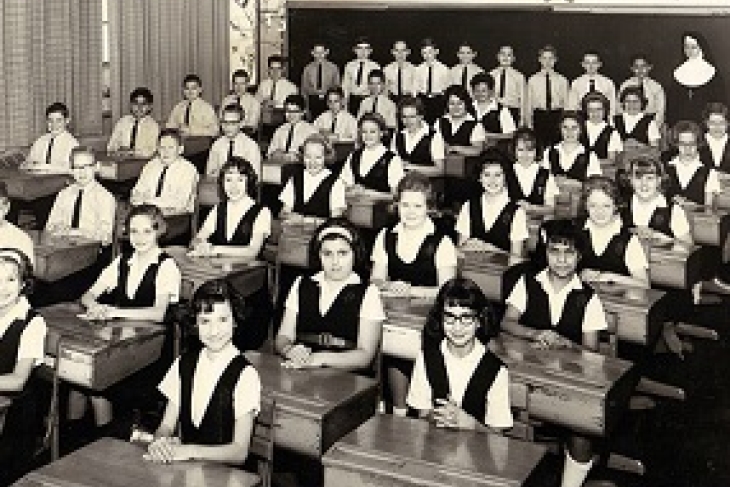[Editor’s note: This is the fifth in a series of personal reflections on the current state of education reform and contemporary conservatism by Andy Smarick, a Bernard Lee Schwartz senior policy fellow with the Thomas B. Fordham Institute. The previous posts in this series can be seen here, here, here, and here.]
Andy’s odyssey: Part five
I’m worried that when the history of today’s era of education reform is written, the most damning critique will be that its progressive leaders had little understanding of social capital.
Social capital describes the “benefits that flow from the trust, reciprocity, information, and cooperation associated with social networks.” When people are connected, they (and even those outside the network) gain, thanks to sharing, interdependence, joint learning, collective action, solidarity, and more.
Key to the development of social capital is longevity. Trust and relationships take time to develop. They mature, evolve, and strengthen over time.
As I wrote in the last installment, progressives’ bent for change is invaluable when longstanding institutions are destructive. But it can also do immeasurable harm when it undermines old valuable institutions, which can serve as wellsprings and keepers of social capital.
It is striking how seldom the reform community discusses preservation. Ed-reform leaders rarely comment on the need to protect our social fabric by insulating some longstanding institution, practice, or relationships from change (though Fordham’s own Robert Pondiscio has shared some worthy thoughts on the subject).
The clearest example of our field’s disregard for the old and valuable—and this disregard’s lamentable consequences—relates to urban Catholic schools. For fifty years, urban Catholic schools have been closing, with thousands shuttered across America’s most distressed communities. Sadly, very few reform organizations have lifted a finger in response.
What a strange reaction from those advertizing their sense of urgency about ensuring disadvantaged kids have access to successful schools. There is an extensive and convincing academic literature on the positive influence of urban Catholic schools on disadvantaged kids. They significantly improve reading scores, high school graduation rates, higher-education matriculation and graduation, and more.
We also know that they can promote civic virtues, that the U.S. Supreme Court found voucher programs constitutional, that they can be held accountable, that district reform has not led to the improvements needed, and that chartering hasn’t created enough high-quality seats yet.
These academic factors provide more than enough reason to protect urban Catholic schools. But a groundbreaking new book, Lost Classrooms, Lost Community, shows the societal harm done when these schools disappear.
This has been conjectured for years, but now we have empirical evidence. In short, urban Catholic school closures are linked to “elevated levels of crime and disorder and suppressed levels of social cohesion.”
But why?
As the book reports, “Catholic schools do not simply generate social capital within classroom walls but also beyond them.” Even after controlling for other relevant variables, the authors find a statistically significant positive “Catholic school effect on neighborhood health.”
A secondary finding that reformers should find just as stunning is that the evidence suggests that new charter schools are not making up the difference. Even when it operates inside a closed urban Catholic school facility, and though it may fill a “physical and educational void,” the new charter does not yet “generate the same positive community benefits.”
Consistent with the academic literature on social capital, it appears that urban Catholic schools, thanks to their longstanding positive contributions to their communities, have extensive societal benefits. Continuity seems to matter greatly.
This should scold progressive education reformers in two ways. First, by ignoring the closure of urban Catholic schools, we have not only allowed high-quality seats to disappear, we’ve also allowed the further deterioration of the threadbare social fabric of fraying communities.
Second, and more broadly, if we’ve been willing to ignore the withering away of this old and effective institution despite the mountain of research attesting to its virtues, what other old institutions, practices, and relationships—without the empirical evidence but potentially as valuable—are we neglecting or threatening?
Should you be tempted to comfort yourself by saying, “Nothing to fear here, I only seek to change things needing changing,” bear in mind the following:
Social capital is invaluable. Social capital depends on longstanding relationships. Longstanding relationships are the product of a complex set of histories, practices, habits, and policies.
Those who cleared old, messy “swamps” to make room for modern development severely damaged ecosystems. Those who cleared old, eyesore “slums” to make room for shiny, new public housing high-rises severely damaged communities. The forces that cleared old, antiquated urban Catholic schools hurt at-risk neighborhoods.
As we tinker with old processes for developing standards and assessments, old ways of delivering instruction, old ways of organizing schools, old ways of developing and evaluating educators, and other old ways, we ought to be mindful of social capital, longevity, and the value of preservation.
In the next installment, I’ll explore our field’s fixation on “new” and its implications.
